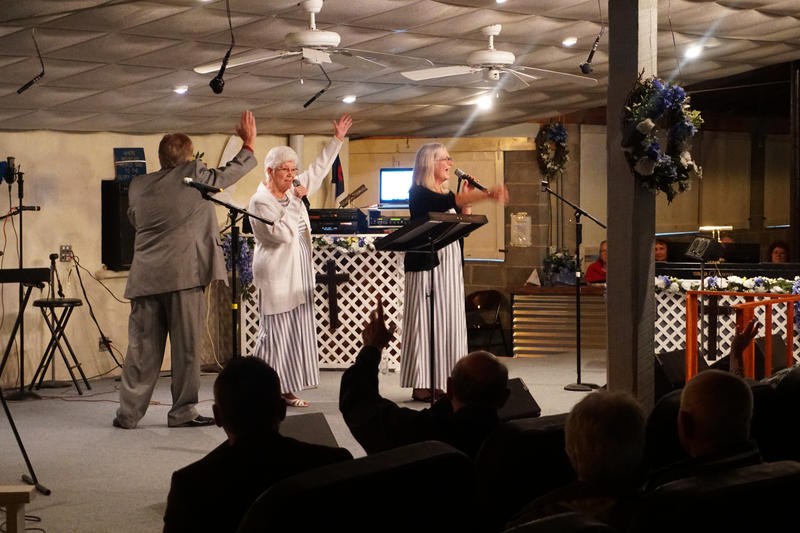This piece was originally published in Scalawag, which amplifies the voices of activists, artists and writers reckoning with the South. You can read the original article here.
Last week’s elections delivered an overwhelming victory for progressives in Virginia, where Democrats solidified a majority in the General Assembly and candidates in local races followed suit. In Charlottesville, where the deadly white nationalist “Unite the Right” rally took place two years ago, voters elected a slate of progressive candidates to the city council, including an activist, Michael Payne, who is endorsed by the Democratic Socialists of America.
But the gap between electing progressive officials and enacting progressive policies is a wide one. An ongoing court battle over the Confederate statues at the center of the white nationalist rally shows how a little-known legal rule has been used to hamstring local democracy across the state.
On September 13, 2019, Charlottesville, Virginia Circuit Court Judge Richard Moore overruled the Charlottesville City Council’s decision to remove its public statues of the Confederate generals Robert E. Lee and Stonewall Jackson.
The council had voted to remove the Lee statue in February 2017 and later voted to remove the Jackson statue. As the council voted to remove the monuments, the racist legacy of the Southern generals came into focus.
A national movement to remove Confederate monuments was gaining momentum after Dylann Roof’s 2015 Confederacy-inspired massacre at the African American Mother Emanuel AME Church in Charleston. Following the white supremacist killings, statutes of Lee were targeted for removal. Many of the monuments had been erected by reactionaries in the early 1900s, by a movement to justify the Confederacy and reframe the South’s defeat in the Civil War. However, the myth that Lee somehow “abhorred slavery” has by now been intensely challenged. A piece in the The Atlantic in 2017 effectively debunked the myth, by making clear he held white supremacist views and treated his slaves brutally.
Two months after the council’s decision to remove the Lee statute, a small group of local residents sued the city of Charlottesville, arguing the local government had overstepped its authority.
That August, white nationalists violently marched on the city at the “Unite the Right” rally to defend the statue. The rally would lead to the death of 32-year-old protester Heather Heyer, and two state officers who died in a helicopter crash while patrolling the rally.
In this context, Judge Moore’s ruling dealt an obvious blow to those seeking to challenge the rising tide of white supremacy. But there’s another, critical implication that has received less attention. This lawsuit reaffirms a rule that’s been thwarting progressive policy-making by cities and counties across the country.
A lesser-known element of the lawsuit against the city is its argument that the city resolutions violated a century-old legal doctrine referred to in Virginia, as the “Dillon Rule.” That rule, also referred to as “Dillon’s Rule,” is named after a corporate railroad attorney and eventual judge named John F. Dillon. To this day, he is credited with pioneering a judicial attack on municipalities at the peak of post-Civil War Reconstruction—a time of heightened African American electoral participation following the emancipation of slaves and expansion of suffrage to African American men.
Dillon became well-known for a legal treatise he wrote in 1873 called The Law of Municipal Corporations which raised alarms about local governments that were trying to redistribute wealth and expand democratic participation in local public services. Populations of urban immigrants were booming. At the time, there were numerous legal battles over local governments’ powers to tax property owners —who were overwhelmingly white—and set labor standards for city contractors. In a Yale University lecture, Dillon called laws that tax property “discrimination legislation” that infringes on property rights, and urged his audience to “fear and guard against… the despotism of the many,—of the majority.”
Similar arguments that upheld the “rightful enjoyment” of property, as he wrote, were at the time also being used to protect property owners’ “rights” to discriminate in private places, and shield them from taxation. His treatise argued—in reactionary fashion—that local governments only possess those powers which states explicitly grant them.
This idea has morphed into a legal doctrine that blankets the nation.
In 1891, the U.S. Supreme Court effectively applied Dillon’s Rule to all American communities by citing it in a ruling that said an Indiana town didn’t have the authority to sell bonds. The Court later reaffirmed and broadened Dillon’s Rule in 1907. Since then, it’s been used to undermine community democracy in many states.
Just as it was used in the late 1800s, Dillon’s Rule was a tool the State of Michigan used to successfully defend dissolving the power of half a dozen majority African American city governments after the financial crisis of 2008 (including Detroit and Flint). It has been used to defend the Alabama State Legislature’s restrictions on the governing powers of Birmingham, a majority-African American city, and other cities. Everywhere, it defines fundamental power dynamics. The rule is rigorously defended by the American Legislative Exchange Council, a conservative corporate-led, state-level policy network.
Some states, such as Michigan, identify as “Home Rule” states. There, local governments enjoy some assumed local self-governing authority. However, this authority is superficial compared to the deeper influence Dillon’s Rule wields, which allows state legislators to unilaterally redefine and restrict what those “Home Rule” powers are, at their whim. “Home Rule” did not protect the power of the Detroit and Flint city councils from being gutted.
That’s because, under Dillon’s Rule, there is no check on how far a state can go in usurping local democracy.
The impact of Dillon’s Rule in Charlottesville is not limited to the fight over statues. Following the white nationalist “Unite the Right” rally there was an effort to ban assault weapons in public spaces. That too was prohibited by Dillon’s Rule.
A local movement also successfully lobbied the city to pursue racial justice reforms. This activism led the city to consider affordable housing reforms that were seen as a benefit to the African American community. It was a concrete response to the white nationalist rally.
But, according to Dillon’s Rule, the city had limited power to enact meaningful affordable housing measures. The Virginia General Assembly hadn’t granted the city authority to pass something as simple as an inclusionary zoning ordinance to require developers set aside a percentage of new developments as “affordable.” That reform—much less anything stronger—also never went forward.
Charlottesville community members also mobilized to establish a stronger civilian review panel to process complaints against local police officers. These efforts were also stymied by the legislature, which, thanks to Dillon’s Rule, does not allow subpoena powers for Charlottesville’s review board.
This form of repression is not unique to Virginia, Alabama, or Michigan. In communities across the nation, local movements are stymied from raising the minimum wage, governing the fossil fuel industry, heightening civil rights protections, and otherwise weighing in on key societal questions.
However, despite the racially-disproportionate impacts of Dillon’s Rule, demands for more local democracy are often misunderstood and confused with demands for racist libertarianism. That’s why communities that work with Community Environmental Legal Defense Fund (CELDF), which I work for, challenges Dillon’s Rule in a way that maintains a commitment to state and federal protections for civil and human rights, while fighting for local communities’ rights to increase and expand those protections.
CELDF works with local governments and local grassroots groups that aim to make fundamental change to state constitutional law, including abolishing Dillon’s Rule. This means redefining state law as a “floor” that local governments have a right to build upon, in order to heighten protections for civil and human rights—just as federal law acts as a “floor” upon which states can increase protections. It means recognizing some constitutional democratic powers for local democracy, and moving away from the system we have today—where states remain unconstrained in their repression of local laws.
CELDF has worked with nearly 200 municipalities and Native nations across ten states that have adopted laws that embody this vision. Our partners are advancing state constitutional change and have passed and advanced local laws that challenge Dillon’s Rule.
Opposition to Dillon’s Rule is gaining some momentum in Virginia, where CELDF has organized with communities. The new Democratic majority has made some promises about allowing local governments more authority to take down racist statues. However, its support for structural change to reverse Dillon’s Rule is far from clear. And it will take more than a simple electoral majority to make such transformative change.
In Charlottesville, the battle over statues continues. Supporters of the Confederate monuments are pressing the city to spend money to protect the statues from vandalism. The city on the other hand is now appealing Judge Moore’s ruling, arguing the statues send a racist message. They will likely get some help from the new legislature.
One Charlottesville activist I spoke to told me, “I wish a thousand locals and [University of Virginia] students would put a chain over [the statutes] and pull them down.”
Simon Davis-Cohen writes and makes films about criminal justice, local democracy, and the law. He does research and communications for the Community Environmental Legal Defense Fund. You can sign up for his nationwide “Ear to the Ground” newsletter — cataloguing state legislation, grassroots news, legal developments, and local media — at: patreon.com/eartotheground.



